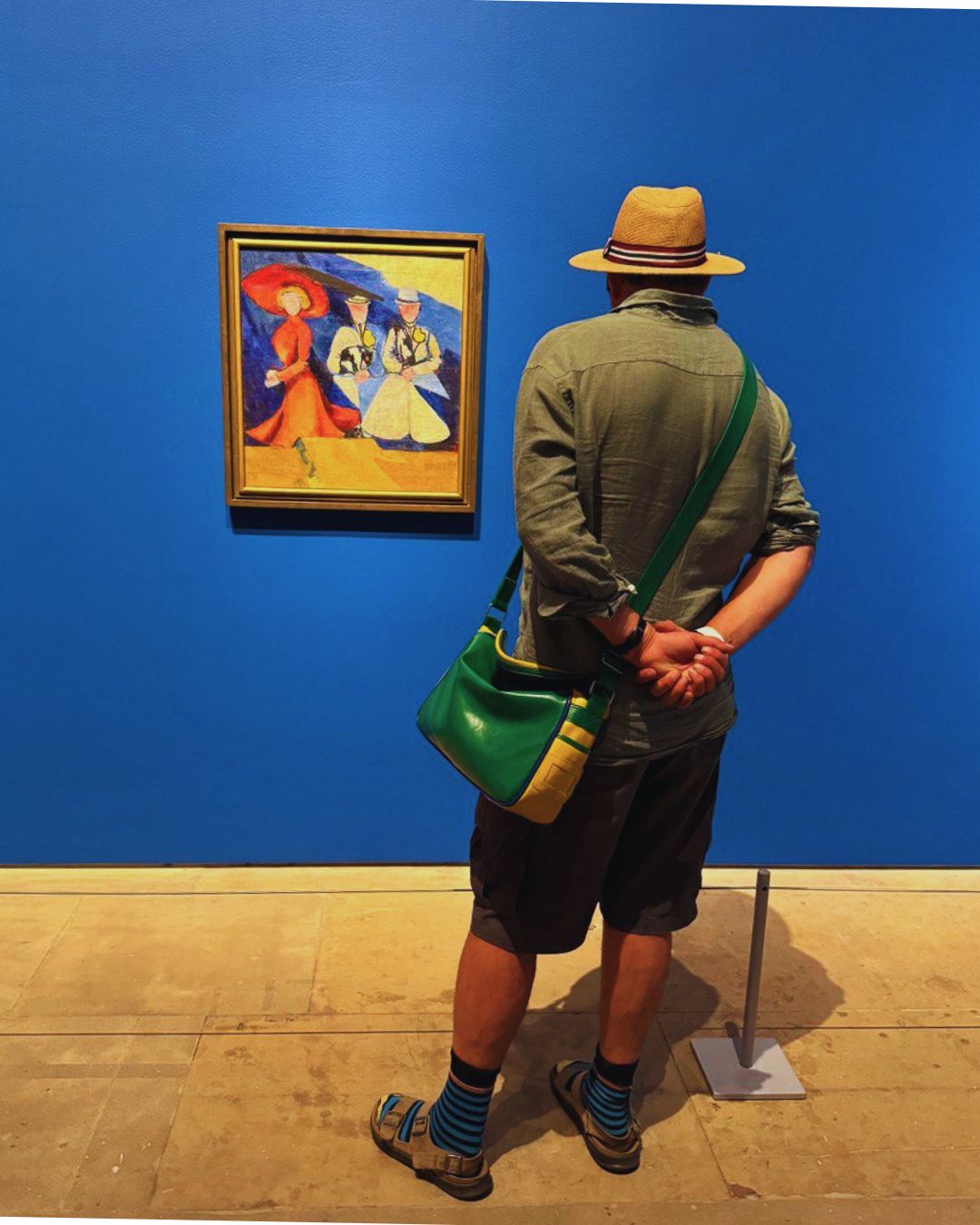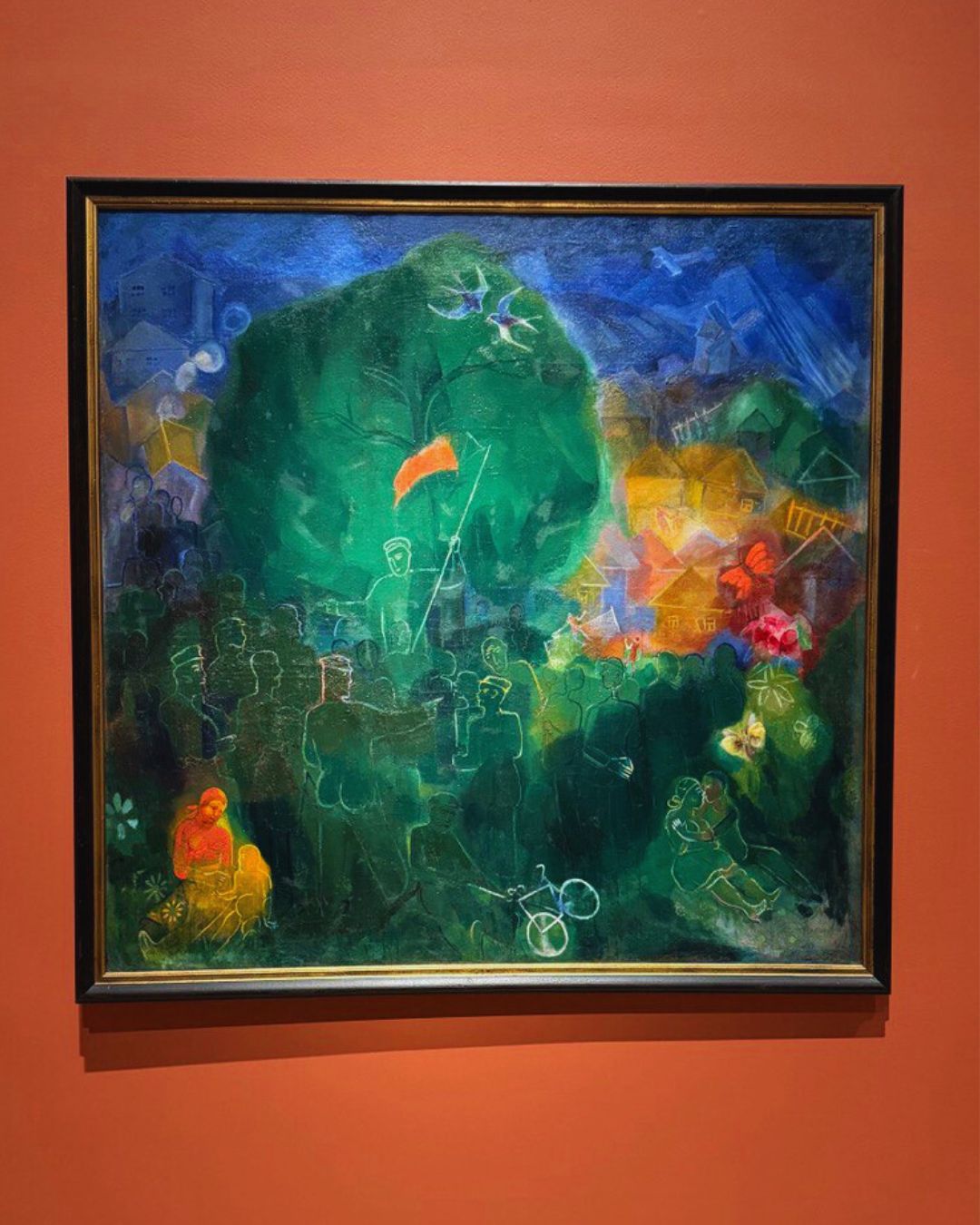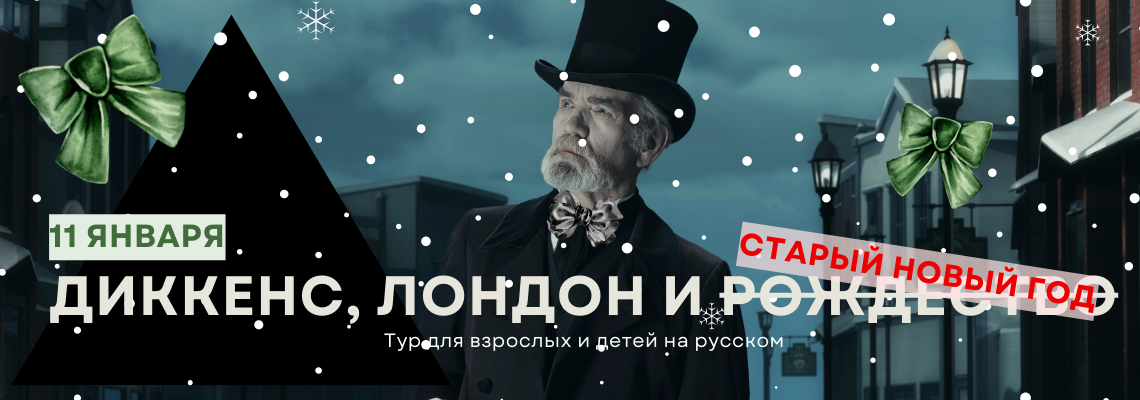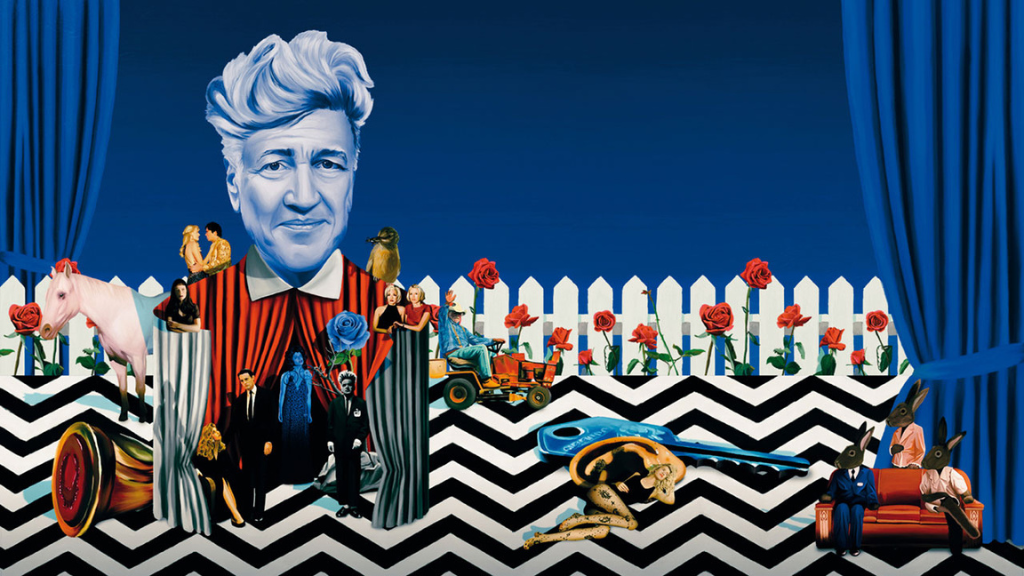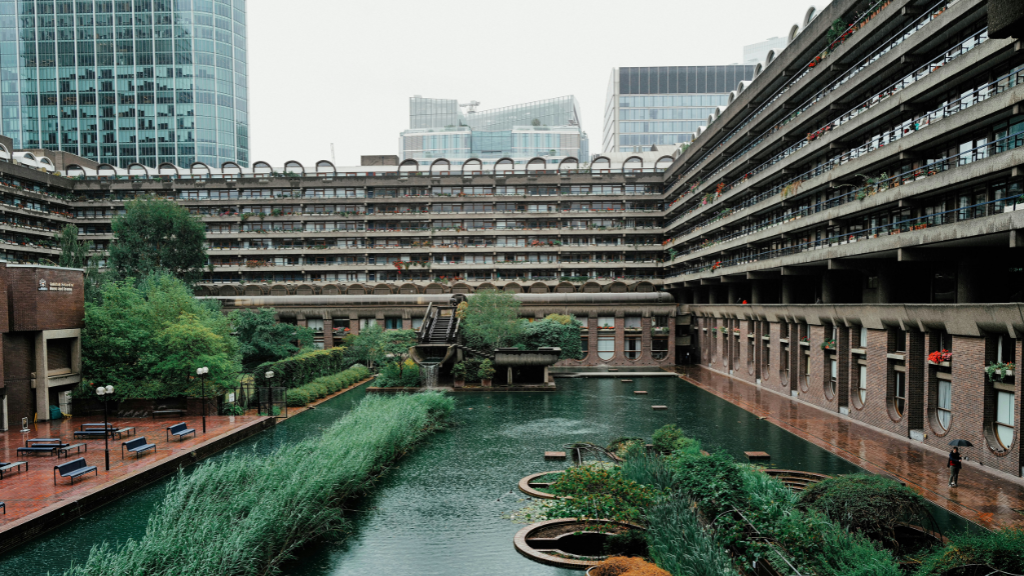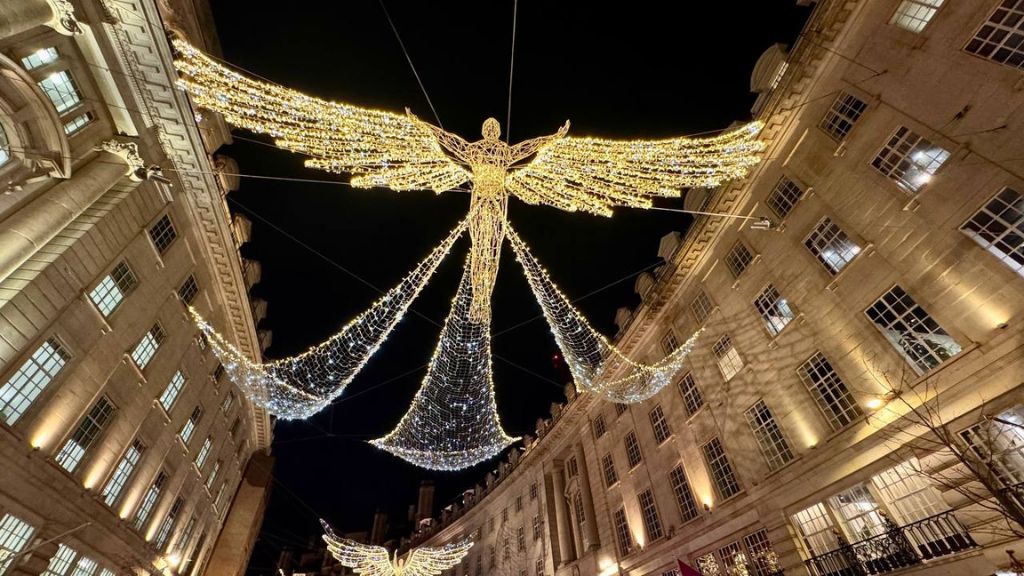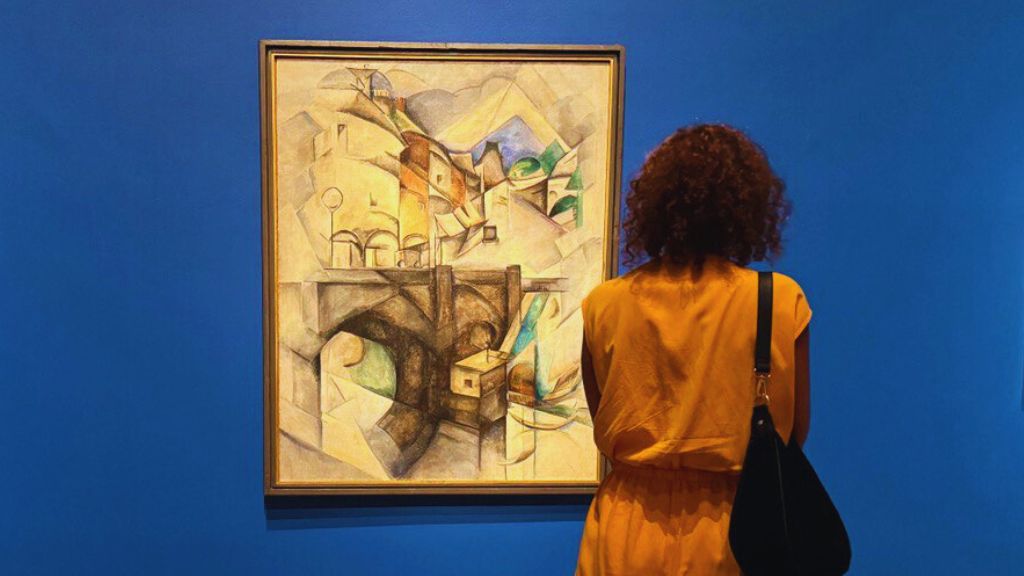
In the Eye of the Storm: exhibition about Ukrainian Modernism in London
The Royal Academy of Arts proceeds its streak with Modernism with an exhibition that holds special significance amid contemporary times. “In the Eye of the Storm: Modernism in Ukraine, 1900-1930s” features a multitude of Ukrainian artists, but also many other influential figures inspired by Ukrainian tradition, schooling, theatre, and design. Afisha.London magazine offers an early glimpse into this unique display.
Starting with the 1900s, the exhibition displays a chronological trajectory of six semantic sections in the attempt to renew and preserve Ukrainian culture at the beginning of the 20th century. Steering away from nationalising artists, “In the Eye of the Strom: Modernism in Ukraine, 1900-1930s” focuses on the distinct role that Ukraine held in inspiring the birth of so many art forms, including Cubism, Suprematism, Orphism, and more. With works that were considered lost or were previously unpublished, it is the most comprehensive Ukrainian exhibition in the UK to date.
As you entered the hall, you will be surprisingly greeted with Three Female Figures by female artist Aleksandra Exter, a leading figure in constructivist paintings. “We wanted to ensure that were present, um, women artists just because they were so important in Ukraine in this year. Aleksandra Exter, she was absolutely pivotal for the development of modernism in Ukraine. So you cannot really do this exhibition without her. I would have liked to have more, to be honest. […] it was quite deliberate. “, said Katia Denysova, one of the curators who worked on the travelling exhibition. It has been touring for two years, the Royal Academy of Arts being the fifth venue: “It’s an effort in cultural diplomacy and kind of showcasing Ukrainian culture and art, but it’s also a way to preserve Ukrainian culture and art.” Much like the art itself, the exhibition is divided into various rooms, underlining the numerous socio-political changes that Ukraine underwent.
- Photo: Afisha.London
- Photo: Afisha.London
The first room, a stark blue colour stimulating a stark first impression, highlights work from the 1900s. The wall didactics, which are available in Ukrainian as well, guide you through the historical events accompanying paintings by David Burliuk, Vadym Meller and more.
Read also: Exploring Malevich: Locations and Insights into His Revolutionary Art
In continuation of Cubo-Futurism, the second room not just changes colour but also focus. As for many artists of that time, theatre, and stage design played a major role in cultivating modern art forms. Here, you can explore a number of influential paintings and drawings that played a major role in the revolution of theatre production during the late 1910s in Ukraine. Influences of cubist and futurist principles come to life as cultural heritage and innovative art movements intersect.
Further, the exhibition explores Kultur Lige, a short-lived yet very important organisation centred around Jewish-Yiddish culture that had to face an abrupt ending with the pogroms of 1918-21. Against a faint blue backdrop, works by artists no less than El Lissitzky are shown here, underlining the rich, yet often overlooked part of Ukrainian tradition that is too, fused with European avant-garde. El Lissitzky, a Russian-born artists who found great inspiration in Ukrainian tradition, worked closely with Kazymyr Malevych, the ‘father’ of Suprematism. Lissitzky’s works weigh no less significant as he promoted Jewish culture all across Russia. He would later become a prominent figure in the Bauhaus and constructive movement and a pioneer in non-representational art, profoundly contributing to Modernism. The room’s theme continues to change as time progresses. Artefacts of propaganda emphasise the Ukrainian struggle under the soviet regime, as it does to this day.
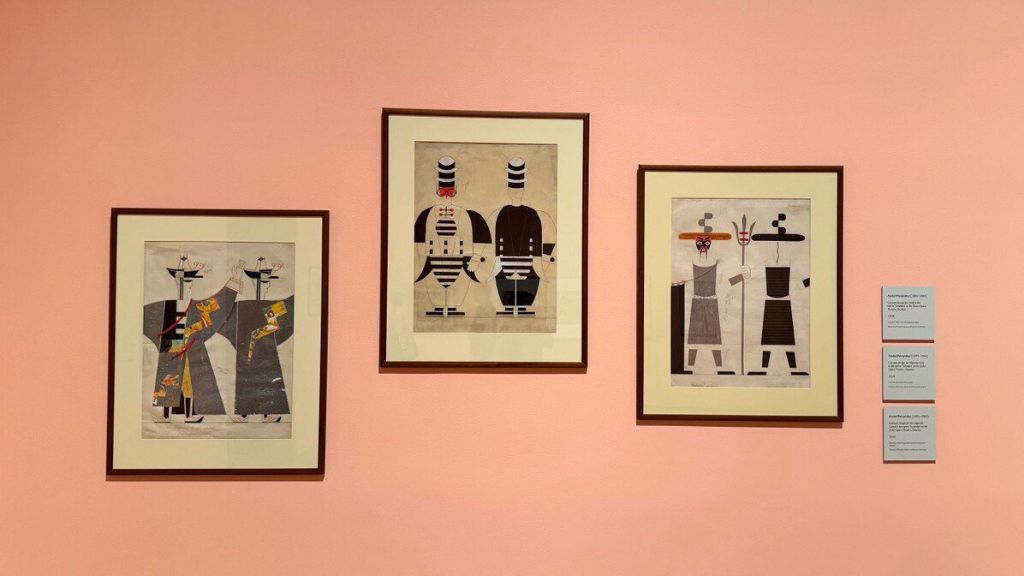
Photo: Afisha.London
Carrying on from the latter, deep orange-coloured walls bring emphasis to the Kyiv Art Institute, a centre for the art of modernism and a birthplace of various, essential teachings. The first painting you probably will see here — the captivating Group Portrait by Viktor Palmov. His piece The 1st of May hangs right beside it, with so much subtle shadowing as to convey the lingering presence of control. However, there is more: Kazymar Malevych’s works are displayed here, representing one of the leading figures of Modernism. His influence is invaluable to the art of the 20th century, as the Ukrainian artist introduced the notion of colour, shapes, and lines superior to subject, or what we now call Suprematism. Some might recall him as ‘the artist who painted a black square’, but many of his other works are to be seen at this exhibition. As catastrophe ripens, the Soviet regime ultimately makes a stanza against all things modern, leaving Malevych to ‘poverty and oblivion’ during his last years.
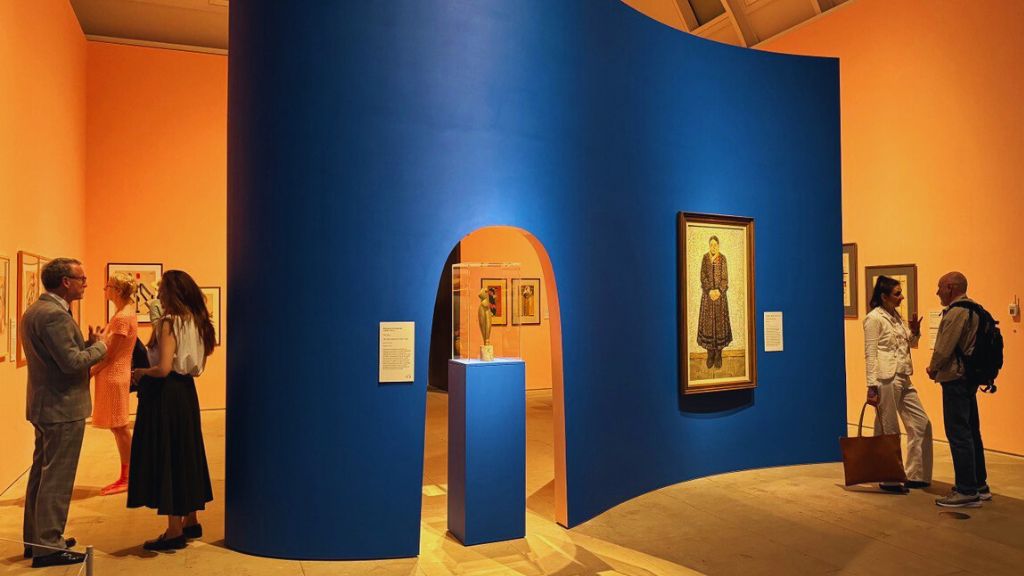
Photo: Afisha.London
Lastly, the exhibition finishes as expected: on the last generation of Ukrainian modernists. Many artists of the late 1920s and 1930s were, as before, heavily inspired by European art movements, but most importantly by schoolings from the Kyiv Art Institute. Their artistic expression, however, would be quickly diminished as soviet pressure rose and finally left no space for modernism. Socialist Realism remained the only acceptable art style in the Soviet Union, where harsher regulations took place as many of our beloved painters and artists were executed and their art destroyed. For one last look into the Life of Modernism, the last section of the exhibition displays only a few, yet very impressionable pieces.
“In the Eye of the Storm: Modernism in Ukraine, 1900-1930s” at the Royal Academy of Arts, 29 June – 13 October 2024. Learn more
Cover photo: Afisha.London
Read also
“Black Panther” Naomi Campbell: an exhibition about the supermodel has opened in London
The UK and beyond: film adaptations of Fyodor Dostoevsky’s books
Tate Modern opens its doors to “Expressionists: Kandinsky, Münter and the Blue Rider”
SUBSCRIBE
Receive our digest once a week with quality Russian events and articles

